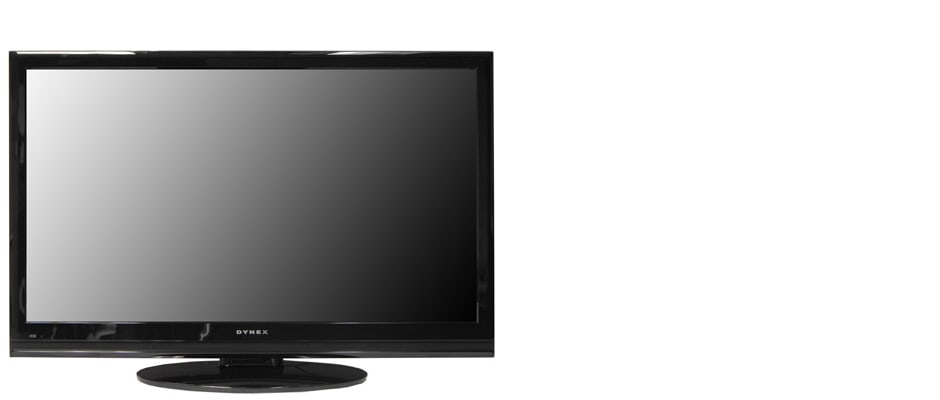Introduction
Overall Design
{{section_header}}{{section.name}}{{/section_header}}
This is not a pretty TV. Bulky and boxy in all the wrong places, this plastic monstrosity is not only ugly, but the casing itself actually gets in its own way if you look at the back near all the ports. Overall, this is a fairly poor design.
Front
{{section_header}}{{section.name}}{{/section_header}}

Back
{{section_header}}{{section.name}}{{/section_header}}

Sides
{{section_header}}{{section.name}}{{/section_header}}

Remote Control
{{section_header}}{{section.name}}{{/section_header}}
Users who dislike the ever-increasing size of more complicated TV sets' remotes will be refreshed by the much smaller remote of the {{product.name}}. Because of its smaller size, its balance and weighting is ideal, and it also fits well in the hand. The key travel is a bit of an issue, as it does take some force to get each key to register a command.
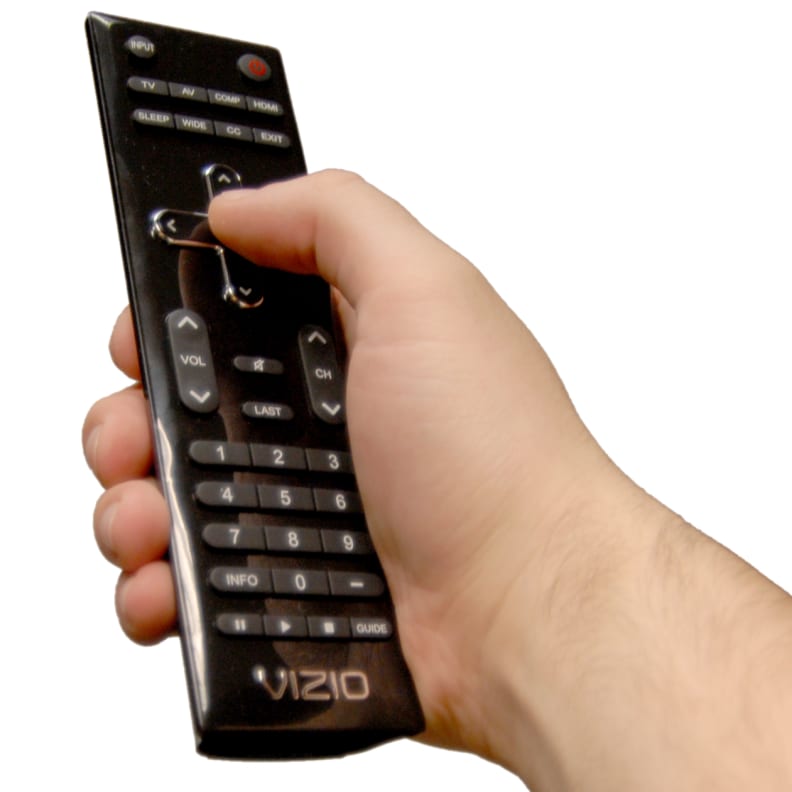
In the Box
{{section_header}}{{section.name}}{{/section_header}}
Along with your monstrosity of an LCD screen, the {{product.name}} includes a stand, remote, batteries, power cable, and assorted documentation.
Black Level
{{section_header}}{{section.name}}{{/section_header}}
The {{product.name}} produced an impressively deep black level of 0.05 cd/m2. That's nearly as good as some plasma TVs we've reviewed. However, this test does not tell the whole story. If you scroll down the page to the Greyscale Gamma section, you'll see that the TV is doing some funky processing to achieve these deep blacks. It has the nasty side effect of virtually killing all the details in the shadows. You can take one look at the screen during a program with a lot of shadows (Law & Order usually does the trick) and you'll note that you can't see a thing in the folds of someone's coat, or that perp lurking in the corner of the room. More on how we test black level.
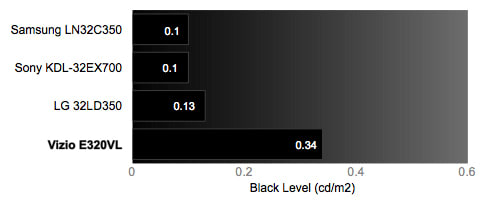
Peak Brightness
{{section_header}}{{section.name}}{{/section_header}}
The {{product.name}}'s peak whites were just as impressive as its black level. We clocked it at 316.57 cd/m2. More on how we test peak brightness.
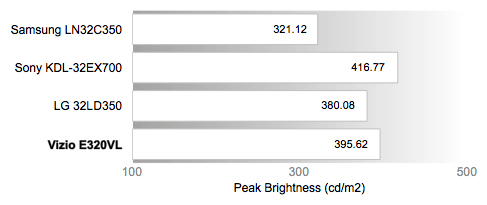
Contrast
{{section_header}}{{section.name}}{{/section_header}}
The contrast ratio of the {{product.name}} is outstanding, but must be taken with a grain of salt. All you're really measuring in the contrast ratio is the TV's deepest black and brightest white. It doesn't say anything about the quality of all the gradients in between those two values. That happens in the Greyscale Gamma test, further down this page. If you care to scroll down, you'll see that that the test revealed some lamentable results. More on how we test contrast.
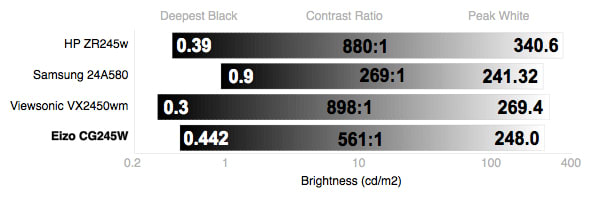
Tunnel Contrast
{{section_header}}{{section.name}}{{/section_header}}
The {{product.name}} was fairly well able to maintain a consistent black level, whether there was a little or a lot of black are on the screen. More on how we test tunnel contrast.
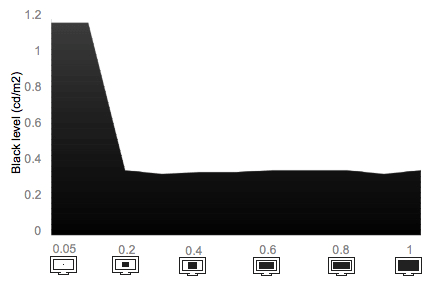
White Falloff
{{section_header}}{{section.name}}{{/section_header}}
The {{product.name}} maintained a perfectly level peak brightness, regardless of how much or how little white was on the screen. More on how we test white falloff.
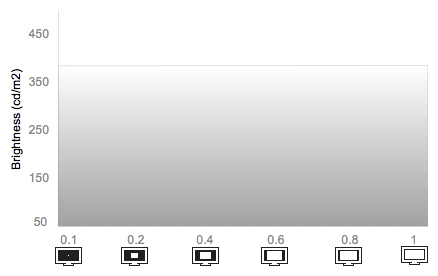
Uniformity
Greyscale Gamma
{{section_header}}{{section.name}}{{/section_header}}
The {{product.name}} clearly has some problems displaying details in the shadows. One look at the screen during a TV show or movie will tell you that. It made calibrating the TV tricky, particularly the brightness setting. In the end, we managed a decent color performance from this calibration, but the something strange is happening the greyscale.
As you can see in the chart below, the shadows (the lower left portion of the scale) are flat – crushed, really. Then line suddenly shoots up, much too steeply. The ideal slope is between 2.1 and 2.2. The {{product.name}}'s steep performance of 2.96 means that it's missing a lot of the finer gradations in the greyscale. More on how we test greyscale gamma.
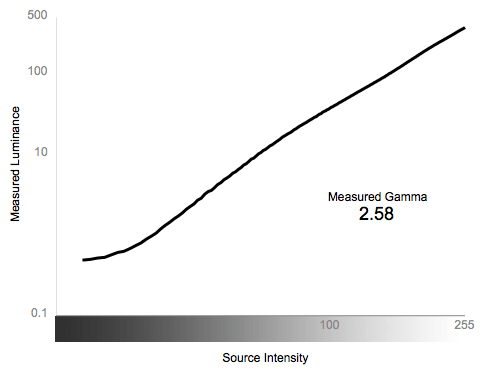
Color Temperature
{{section_header}}{{section.name}}{{/section_header}}
The {{product.name}} had few problems maintaining a consistent color temperature. Well done, Dynex. More on how we test color temperature.
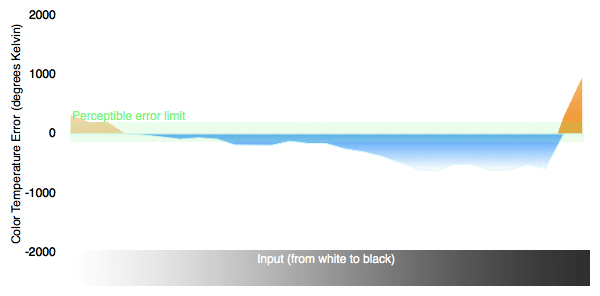
RGB Curves
{{section_header}}{{section.name}}{{/section_header}}
We test each of the 256 values in each of the red, green, and blue channels in order to get an accurate gauge of how well the TV transitions from dark to light. We're looking for smooth lines, and that's not really what we're seeing here. Look at the chart below. You'll see hundred of little hiccups in the line. In real life TV viewing, that manifests itself as color banding – stripes of solid color where there should be seamless gradients. It's not the worst we've seen, but it's far from the best. More on how we test RGB curves.
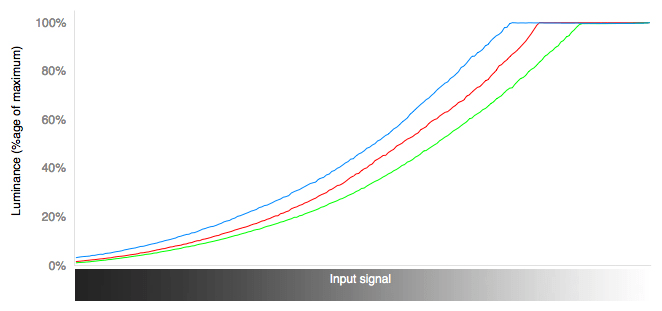
The strips below are digital recreations of the test data, as you might see them on the TV screen. They're compared with three similar TVs, as well as an ideal response curve.
Motion Performance
{{section_header}}{{section.name}}{{/section_header}}
When we analyzed moving objects on the {{product.name}}'s screen, we noted the typical judder that you'll see in a lot of LCD TVs. Unlike more expensive LCDs, this model lacks a "motion smoothing" feature that might eliminate some of these issues. Such judder causes a loss in fine detail, like small text or the finer features on a person's face. On the plus side, there were no noticeable artifacts like color smearing or haloing. More on how we test motion performance.
3:2 Pulldown & 24fps
{{section_header}}{{section.name}}{{/section_header}}
The {{product.name}} had no problems displaying native 24fps content, like you might get from a Blu-Ray movie. More on how we test 3:2 pulldown and 24fps.
Resolution Scaling
{{section_header}}{{section.name}}{{/section_header}}
The {{product.name}} has a native resolution of 1080p (1920 x 1080), but most of the content you feed it will be of a lower resolution. It's up to the TV's internal processing to re-size that information to fit the screen. Fortunately, the {{product.name}} is remarkably adept at this task. In fact, it was the best performance we've seen in a while. For all its faults, this TV displays a very sharp picture and handles all resolutions quite well. More on how we test resolution scaling.
480p
With 480p content, there were no problems.
720p
720p content created no issues, either.
Formats
{{section_header}}{{section.name}}{{/section_header}}
The {{product.name}} has a native resolution of 1080p (1920 x 1080), but can adeptly handle all standard NTSC formats.
Viewing Angle
{{section_header}}{{section.name}}{{/section_header}}
The {{product.name}} only managed a viewing angle of about 45 degrees, or 22 degrees from center in either direction. As you can see in the chart below, this is pretty standard for an LCD TV. The Vizio and Insignia are virtually identical. The Samsung is a plasma TV, which offers the benefit of a far wider viewing angle.
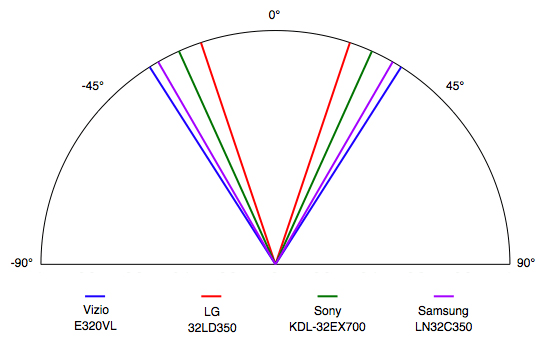
Reflectance
{{section_header}}{{section.name}}{{/section_header}}
The {{product.name}}'s screen is not terribly reflective of ambient light. When hit with a strong light, you'll see the reflection surrounded by a small and diffused glow. It's not very distracting, and like many LCDs, this might make this a good choice for a sunny room. Plasmas, on the other hand, have a glass panel that can be highly reflective.
Video Processing
{{section_header}}{{section.name}}{{/section_header}}
This is a budget TV. It's scant on specials like video processing features. There are just two here.
Calibration
{{section_header}}{{section.name}}{{/section_header}}
Calibrating the {{product.name}} was a little tricky, mostly because we had to lower the Brightness setting so low. It seemed odd, so we ran the tests under two separate calibration settings. These results below offered the best performance.

All of our calibration is done in conjunction with the DisplayMate software.
](http://www.displaymate.com/)
Video Modes
{{section_header}}{{section.name}}{{/section_header}}
The {{product.name}} has a handful of video modes, each suited for a different viewing preference.
Connectivity
{{section_header}}{{section.name}}{{/section_header}}
On the back of the {{product.name}} is where you'll find all of your ports, arranged in an L-shape. Some of the jacks are a little difficult to get at because of the poor fit of the casing over its metal innards. Included among the paltry collection are two HDMI ports, a composite/component video input, a headphone jack, VGA input, 1/8th-inch audio input, and a digital audio output.
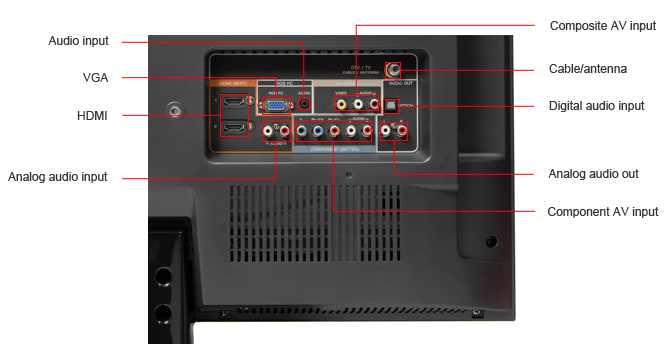
Placement
{{section_header}}{{section.name}}{{/section_header}}
It's an enormous pain to access the ports that face downwards. There's no reason this design should have been approved. Every major TV manufacturer has figured out a way around this problem. Suck it up, Dynex. Get to work.
Audio Quality
{{section_header}}{{section.name}}{{/section_header}}
The audio performance is pretty decent, considering the dual-20W speakers. What really surprised us was how convincing the surround sound emulator was. It only worked if you stood directly in front of the screen. Stray but a little, and the effect will fail. This is, of course, not a shortcoming of a real, dedicated surround sound audio system.
Menu Interface
{{section_header}}{{section.name}}{{/section_header}}
The menu system of the {{product.name}} is simple enough, with barely any frills to catch your eye, or unnecessary elements to it. If you have certain features enabled, it will disable others, which is incredibly frustrating if you want to mix and match settings. You shouldn't have to hunt and solve puzzles to adjust the backlight or brightness settings. Our only other note is that the response time can be a bit laggy.
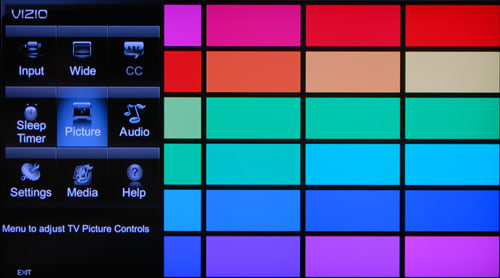
Advanced menus are nested in the same interface as the main menu, usually with very few options. To exit out of these menus, hitting "menu" will bring you back to the preview screen.
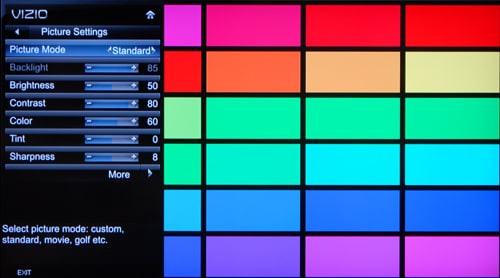
Instruction Manual
{{section_header}}{{section.name}}{{/section_header}}
The instruction manual is pleasantly straightforward and thorough. Sure, it doesn't read like an engineering manual, but all the basics are covered and none of the TV's features are skipped. For easier browsing, download the PDF here.
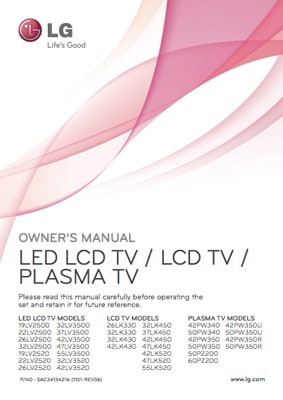
Power Consumption
{{section_header}}{{section.name}}{{/section_header}}
The {{product.name}} requires about 140 watts of electricity, if you turn the backlight down to a minimum recommended setting. That should run you about $27.34 a year. This is about average (maybe just a tad more than average) compared to similarly sized LCD televisions. Note that the Samsung, a plasma TV, is more expensive to operate than any of the LCDs, which is common.
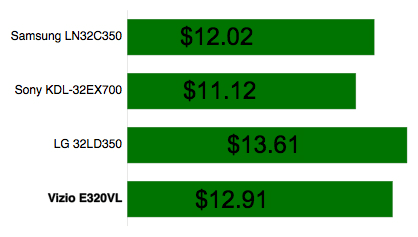
Value Comparison
{{section_header}}{{section.name}}{{/section_header}}
The Vizio E3D420VX took home our award for Best Value in 2011, which makes it a far better buy than the {{product.name}}. In addition to superior color performance, it offers 3D display, internet connectivity, and more ports. Sure it costs more ($729 MSRP versus $599 MSRP for the Dynex), but your money is well-spent.
Blacks & Whites
{{section_header}}{{section.name}}{{/section_header}}
The Vizio could not come close to the {{product.name}}'s black level. As a result, there's a huge gap in their contrast ratio. However, the overall greyscale performance of the Vizio was better, as you can actually see detail in the shadows, something the Dynex overlooked.

Color Accuracy
{{section_header}}{{section.name}}{{/section_header}}
The Vizio passed our color tests with flying colors, unlike the {{product.name}}.
Motion
{{section_header}}{{section.name}}{{/section_header}}
Both the Vizio E3D420VX and the {{product.name}} performed decently in our motion tests. Like most LCDs, there was a little judder, but no big problems with artifacts.
Viewing Effects
{{section_header}}{{section.name}}{{/section_header}}
The {{product.name}} and Vizio were virtually identical in viewing angle – about 45 degrees in total.
Connectivity
{{section_header}}{{section.name}}{{/section_header}}
The {{product.name}} is definitely light on connectivity options. The Vizio includes an additional HDMI, more audio inputs
Value Comparison
{{section_header}}{{section.name}}{{/section_header}}
The Samsung PN43D490 runs a little pricier ($699 MSRP versus the $599 MSRP for the {{product.name}}), but there are some advantages to the Samsung. It's a plasma, which means deeper black levels and a wider viewing angle. The D490 series is also 3D. However, we found some notable flaws with the Samsung, including an unusual native resolution and some issues with motion performance. That said, some people are gaga for plasma, and this is an affordable option.
Blacks & Whites
{{section_header}}{{section.name}}{{/section_header}}
The Samsung is a plasma TV, which is going to beat an LCD's black level every time, even one as good as the {{product.name}}. However, the Samsung showed a lot more details in the shadows, which makes for a better overall picture.

Color Accuracy
{{section_header}}{{section.name}}{{/section_header}}
Neither TV was a stellar performer in our color tests. The Samsung had a harder time with rendering color of objects in motion. The Dynex's color transitions were choppy when in motion or when standing still. No clear winner here.
Motion
{{section_header}}{{section.name}}{{/section_header}}
The Samsung D490 series had a lot of problems with objects in motion, including banding color which causes a lot of detail loss.
Viewing Effects
{{section_header}}{{section.name}}{{/section_header}}
As a plasma TV, the Samsung has a far wider viewing angle than any LCD TV.
Connectivity
{{section_header}}{{section.name}}{{/section_header}}
The Samsung D490 and the {{product.name}} are both limited in their connectivity options, though the Samsung includes one additional HDMI and an EX-LINK port.
Value Comparison
{{section_header}}{{section.name}}{{/section_header}}
The Insignia NS-42L780A12 has the same price as the {{product.name}}, both with an MSRP of $599. Overall, it's probably the better performing TV, based on its results in the color tests. The Dynex has a wider contrast ratio, but there was so much information missing in the shadows that it made the picture hard to watch.
Blacks & Whites
{{section_header}}{{section.name}}{{/section_header}}
The Insignia did not have a particularly deep black level, but the peak whites were nice and bright. On paper, yes, the Dynex has a dramatically better contrast ratio. However, the Insignia allows you to see more details in the shadows. Neither were stellar performers here.

Color Accuracy
{{section_header}}{{section.name}}{{/section_header}}
The Insignia rendered excellent colors, far surpassing the performance of the {{product.name}}.
Motion
{{section_header}}{{section.name}}{{/section_header}}
The Insignia and and the {{product.name}} both showed some of the judder typical of LCD displays. However, the Insignia has an option in the menu for motion smoothing. It produces some odd side effects, so we wouldn't recommend it for all types of viewing situations, but it does make for a smoother picture.
Viewing Effects
{{section_header}}{{section.name}}{{/section_header}}
The Insignia and {{product.name}} have nearly identical viewing angles, both around 45 degrees in total.
Connectivity
{{section_header}}{{section.name}}{{/section_header}}
The Insignia has one additional HDMI port, but everything else is a same as the {{product.name}}, right down to the terrible, downward-facing ports that you can't reach.
Conclusion
The {{product.name}} (MSRP $599) is a flawed television, but certainly not without its positives. Dynex is, of course, a house brand for Best Buy, just like the Insignia brand, so don't expect getting it any cheaper than Best Buy is selling it for. The Dynex brand doesn't exude an image of quality or trust like Sony or Samsung or Panasonic, and rightfully not – it hasn't earned it. Case in point, the DX-46L261A12. The black levels are crushed to achieve a great score in our black level test, but as a result, there's no detail in the shadows. It's a cheat, and a cheap one at that.
The rest of the test results were mixed. The TV's color performance is rocky, but not the worst we've seen. The motion performance and resolution scaling were actually pretty good. In terms of interface and design, the {{product.name}} couldn't be simpler. Don't expect frills here.
Overall, we'd pass on this TV. The identically priced Insignia NS-42L780A12 (ironically pitting Best Buy against itself) is a better performer overall with no loss of features.
Photo Gallery
{{photo_gallery "Front Tour Image", "Back Tour Image", "Sides Tour Image", "Stand Photo", "Controls Photo", "Remote Control Photo", "Connectivity Tour Image 1", "Connectivity Tour Image 2", "Connectivity Extra Photo", "Menu Main Photo", "Menu 2 Photo", "Internet Features 1 Photo", "Internet Features 2 Photo", "Internet Features 3 Photo", "Local Media Playback 1 Photo", "Local Media Playback 2 Photo"}}
Ratings & Specs
{{manufacturer_specs_table}}
Meet the tester
Christian Sherden is a valued contributor to the Reviewed.com family of sites.
Checking our work.
Our team is here to help you buy the best stuff and love what you own. Our writers, editors, and experts obsess over the products we cover to make sure you're confident and satisfied. Have a different opinion about something we recommend? Email us and we'll compare notes.
Shoot us an email